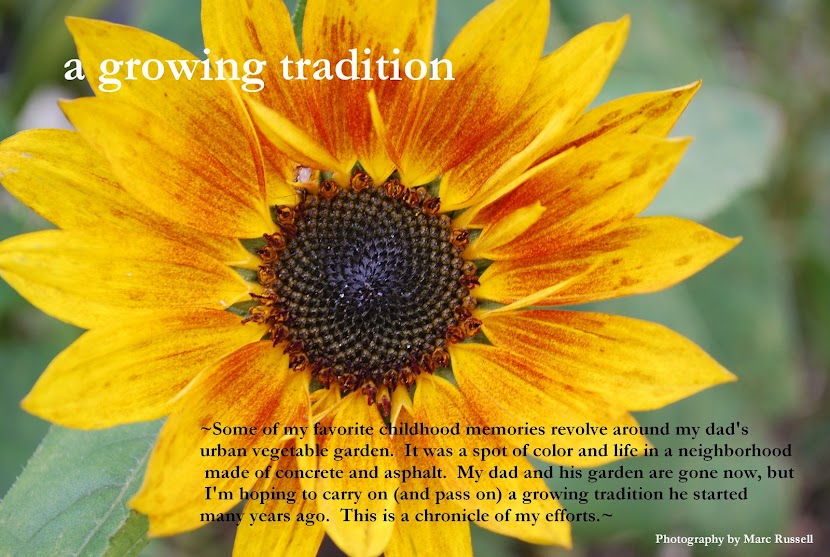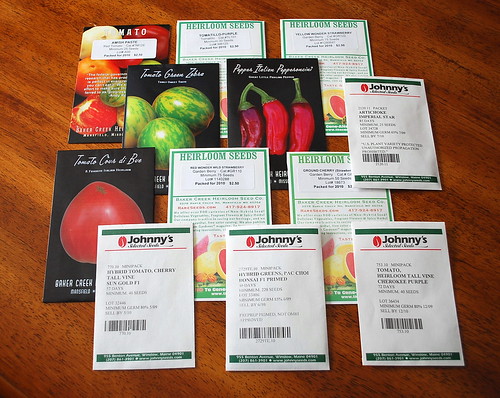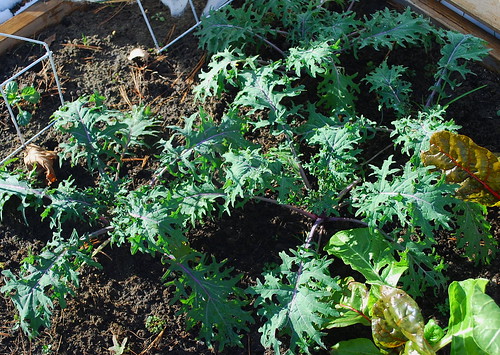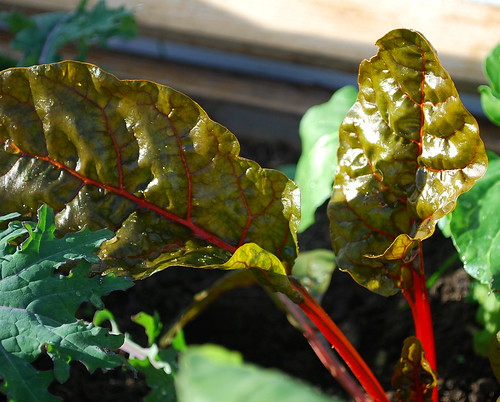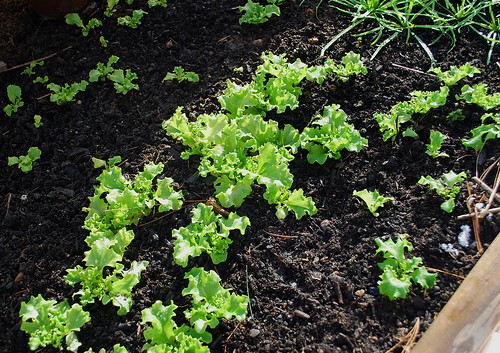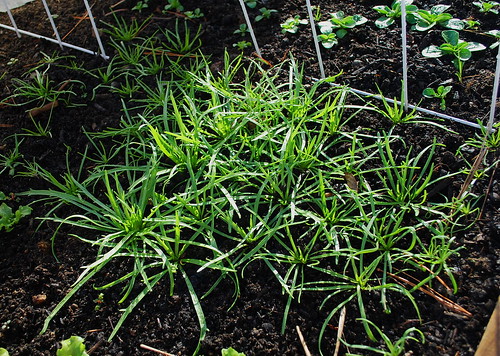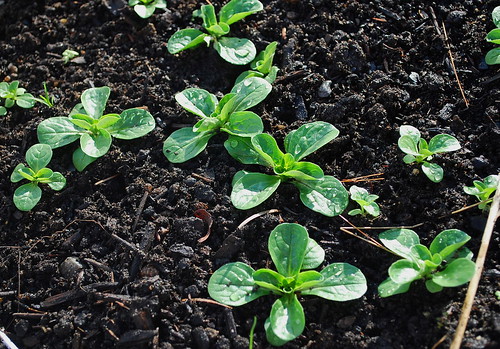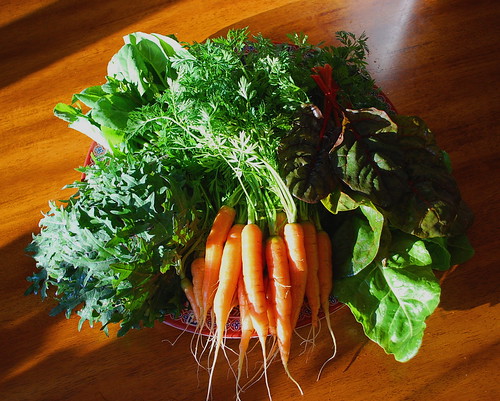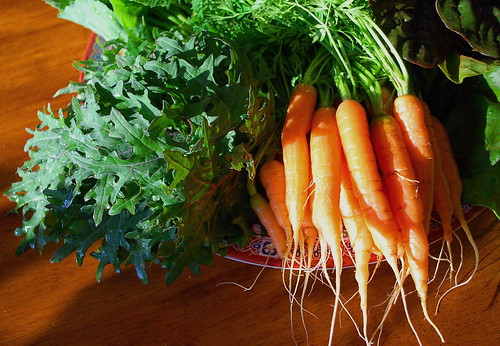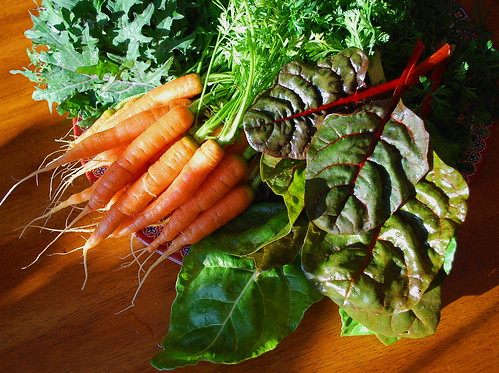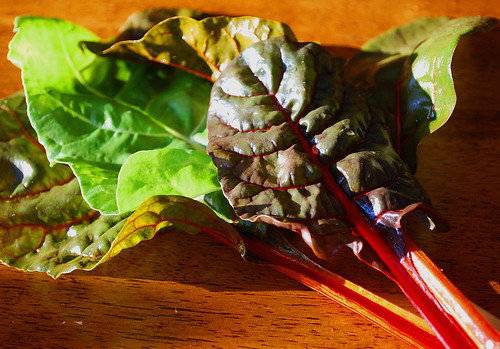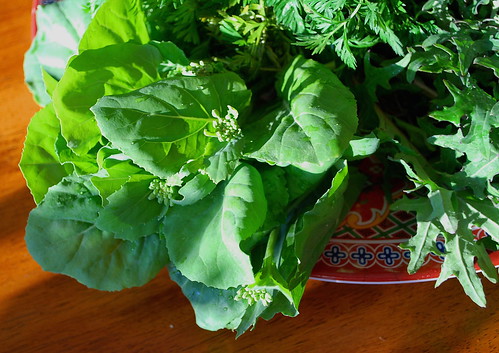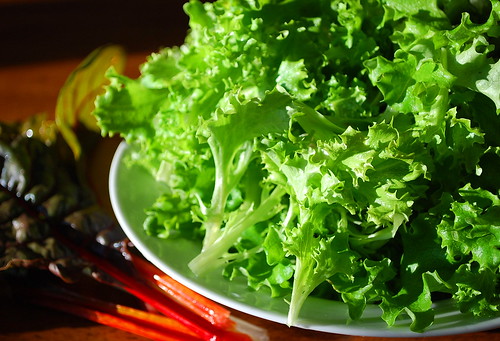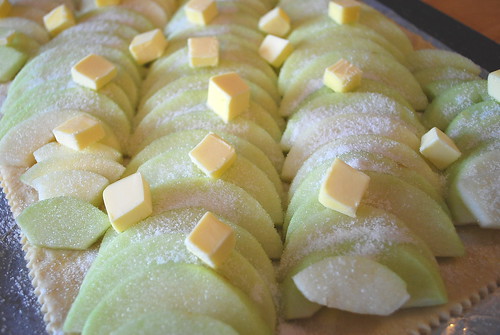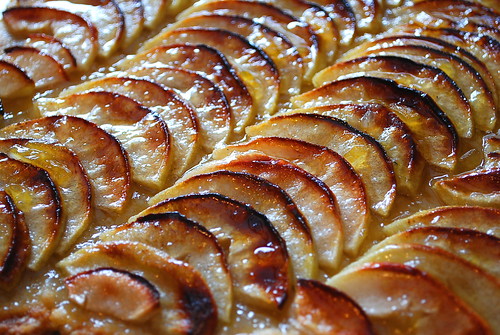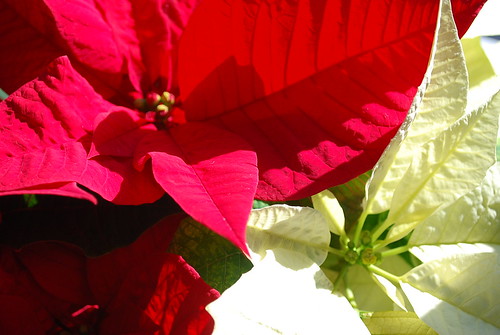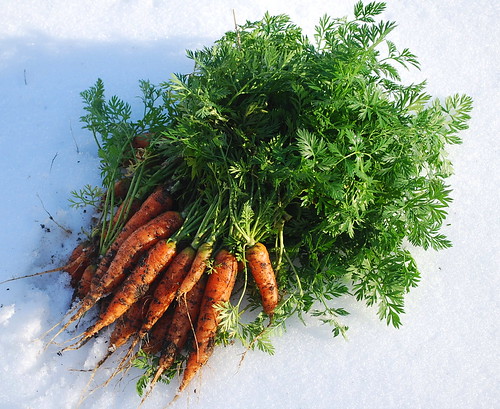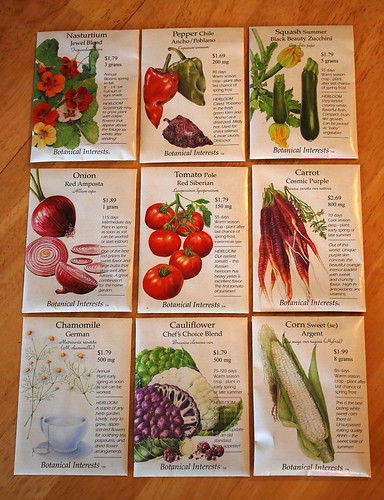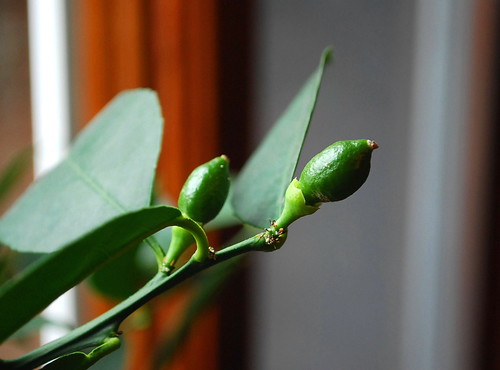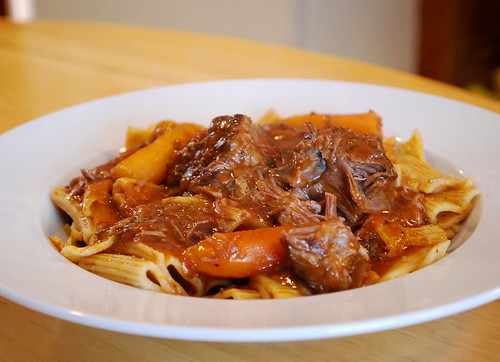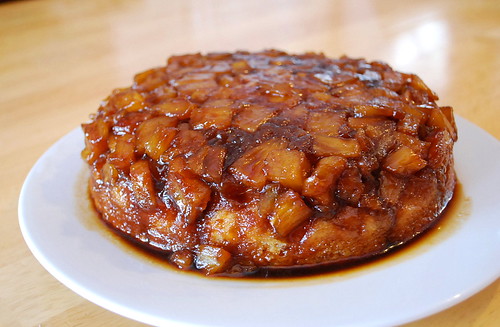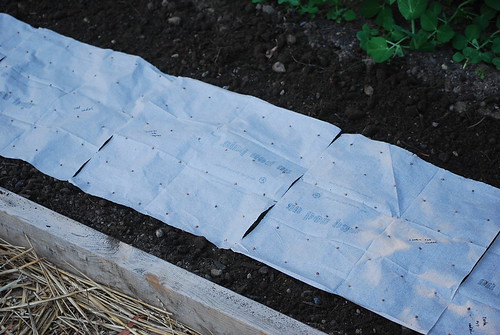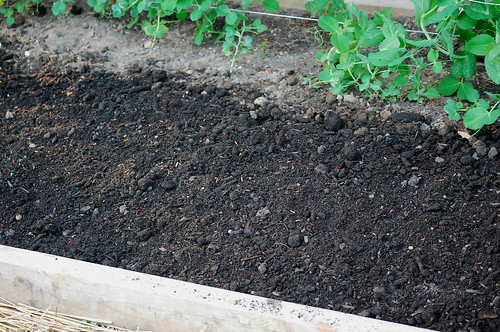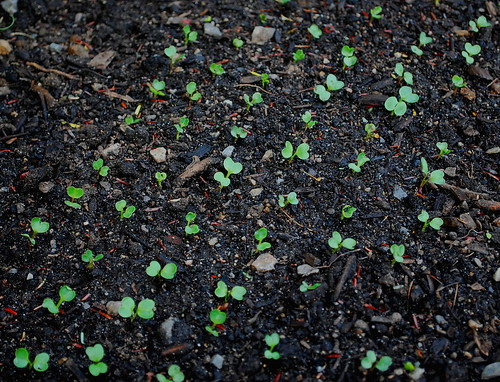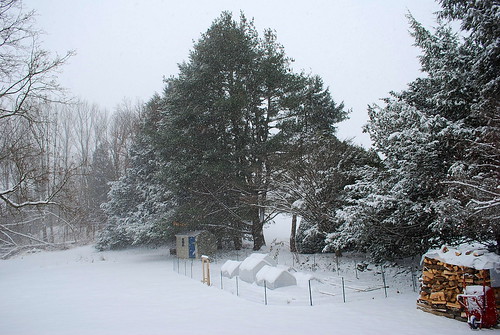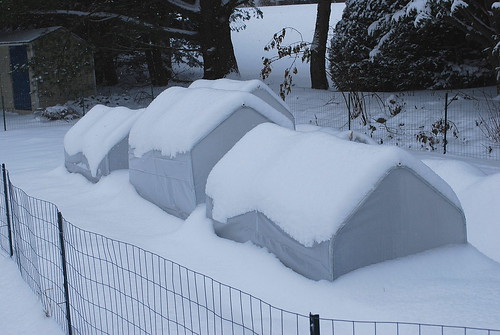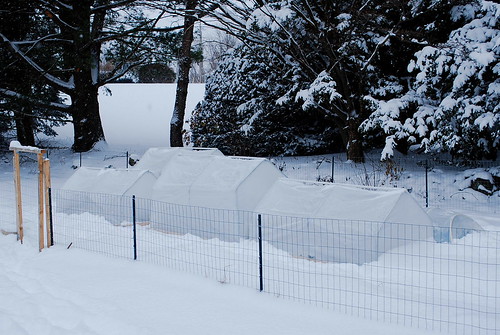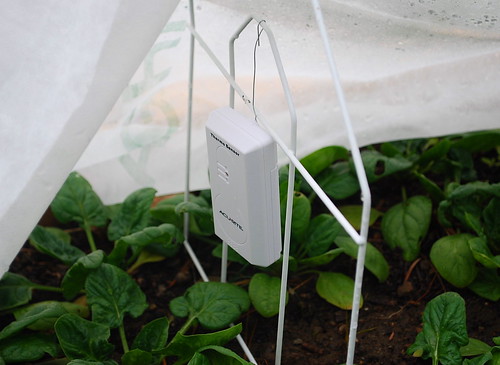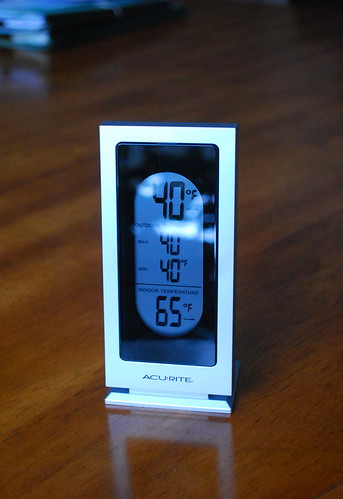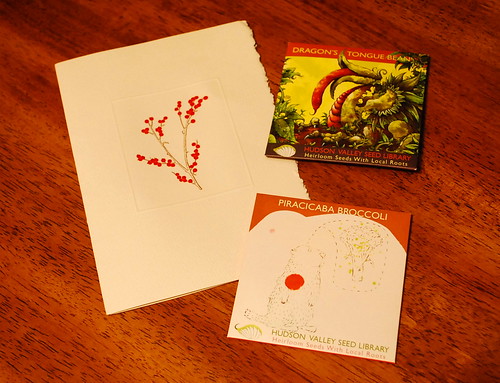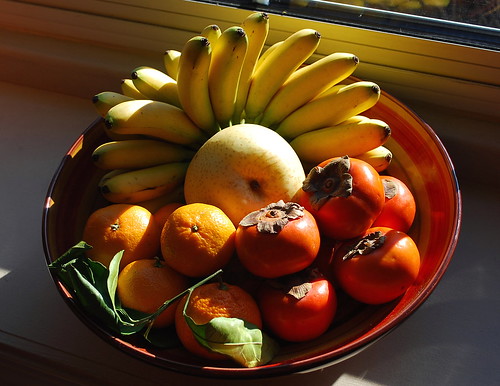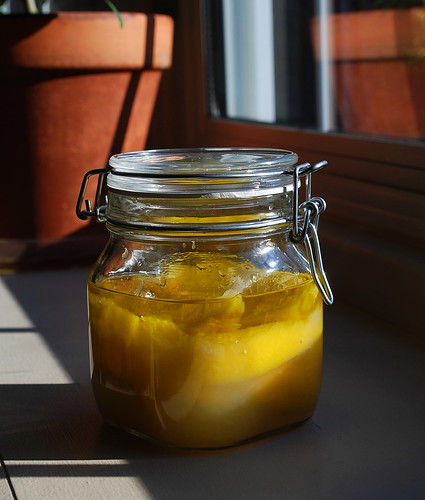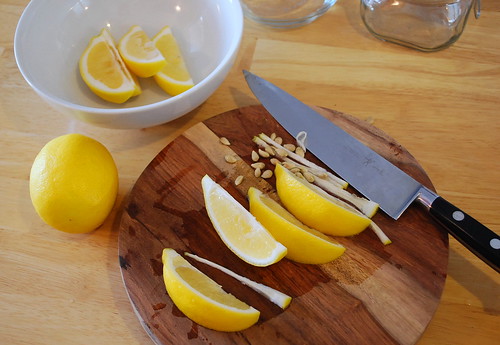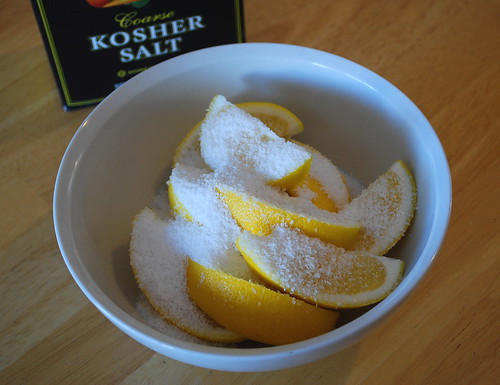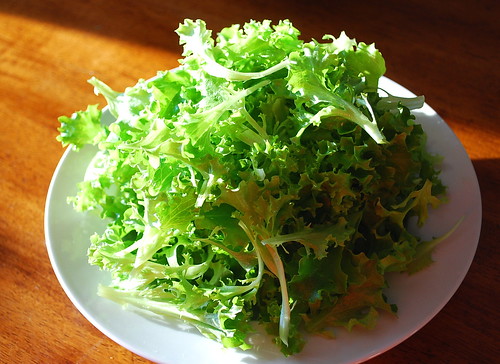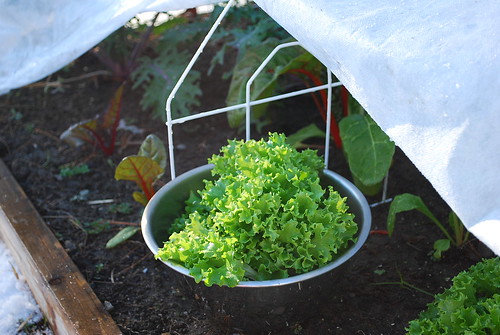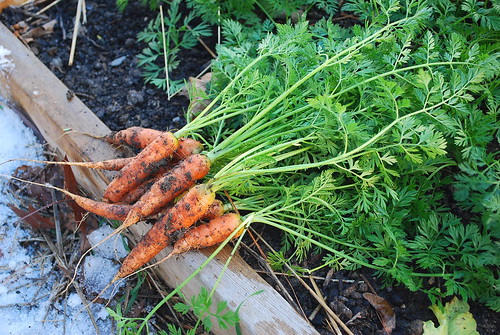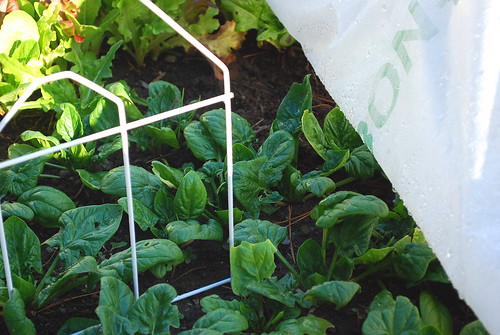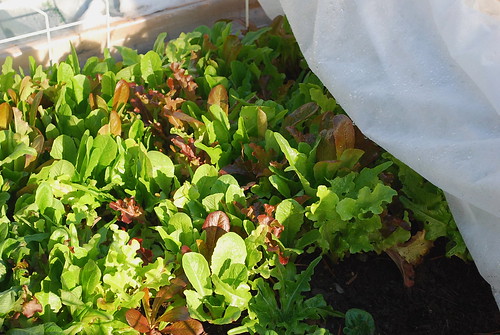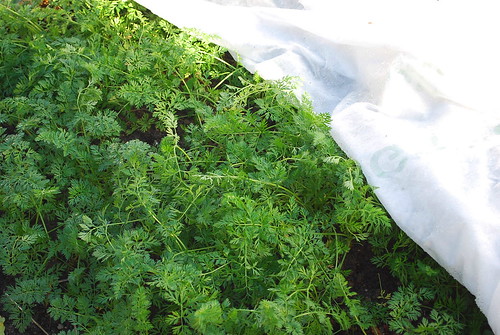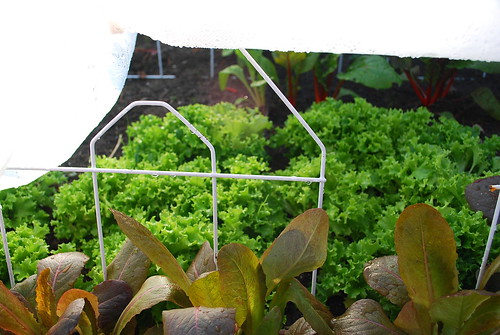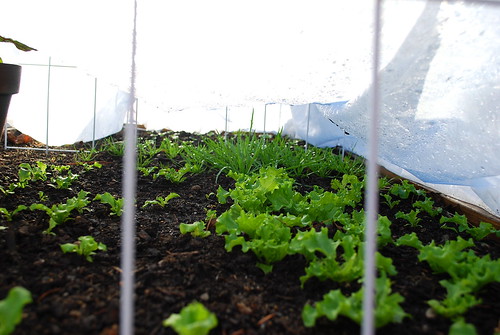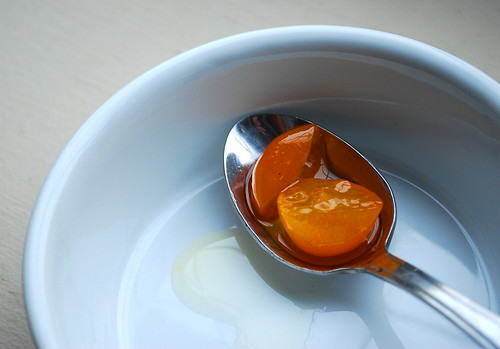
I've always been curious about Kumquats, and can still recall the first time I laid eyes on one. I was probably six or seven years old, the place was Long Wood Gardens in Kennett Square, Pennsylvania. I remember "liberating" a kumquat from a small tree inside one of their massive conservatories. (Some children steal toys, I stole curious foods.) After trying unsuccessfully to peel it, I ended up popping the entire thing into my mouth. Since then, I've been hooked.
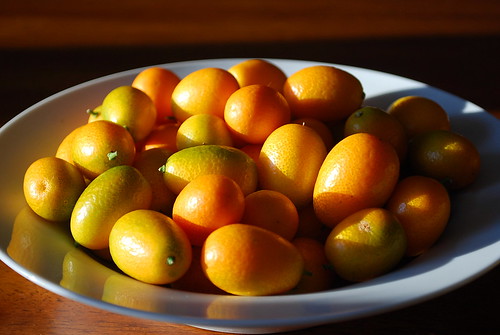
I actually really enjoy the sweet sharp tang of the kumquat peel and so I don't mind munching on them raw. However, I've heard they were excellent candied so this was my project for this particular batch from the grocery store. Hopefully one day I'll be able to pick fresh kumquats straight from my very own dwarf tree. I plan on purchasing one from Four Winds Growers sometime soon.
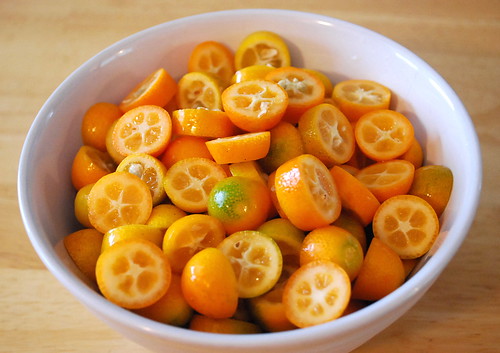
I started off by slicing about 4 cups of kumquats crosswise into quarter inch pieces. Then came the tedious task of removing all of the seeds with a toothpick. In a small pot, I heated 2 cups of sugar, 2 cups of water and 1/4 teaspoon of salt for a few minutes until the sugar was dissolved. Then I added the kumquats and simmered the mixture uncovered on medium-low heat for about 15 minutes. Using a slotted spoon, I placed the cooked kumquats to a bowl and boiled the liquid on medium-high heat for another 10 minutes until it reduced to a more syrupy consistency. (Don't over do it. The syrup will thicken as it cools.) Finally, I added the kumquats back in.

I spooned most of candied kumquats and syrup into an airtight jar to be stored in the back of the refrigerator where they will keep for a long time. The rest, I processed for 10 ten minutes inside a water-bath canner and will save for a rainy day.
As the jars cool, the candied kumquats will plump-up as they absorb the sweet and slightly-tart syrup. I like a bit of bite to them so I didn't simmer the kumquats for too long. Next time, however, I think I'll try to candy them whole and cook them for a longer period of time (an hour or two) to see if they are better that way. For those who particularly love the citrus rind in marmalade, these candied kumquats are definitely worth trying. I already love them spooned over vanilla or coffee ice cream. I will also have to try them on french toast.
